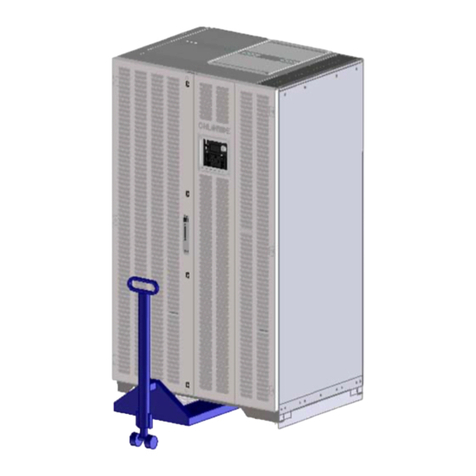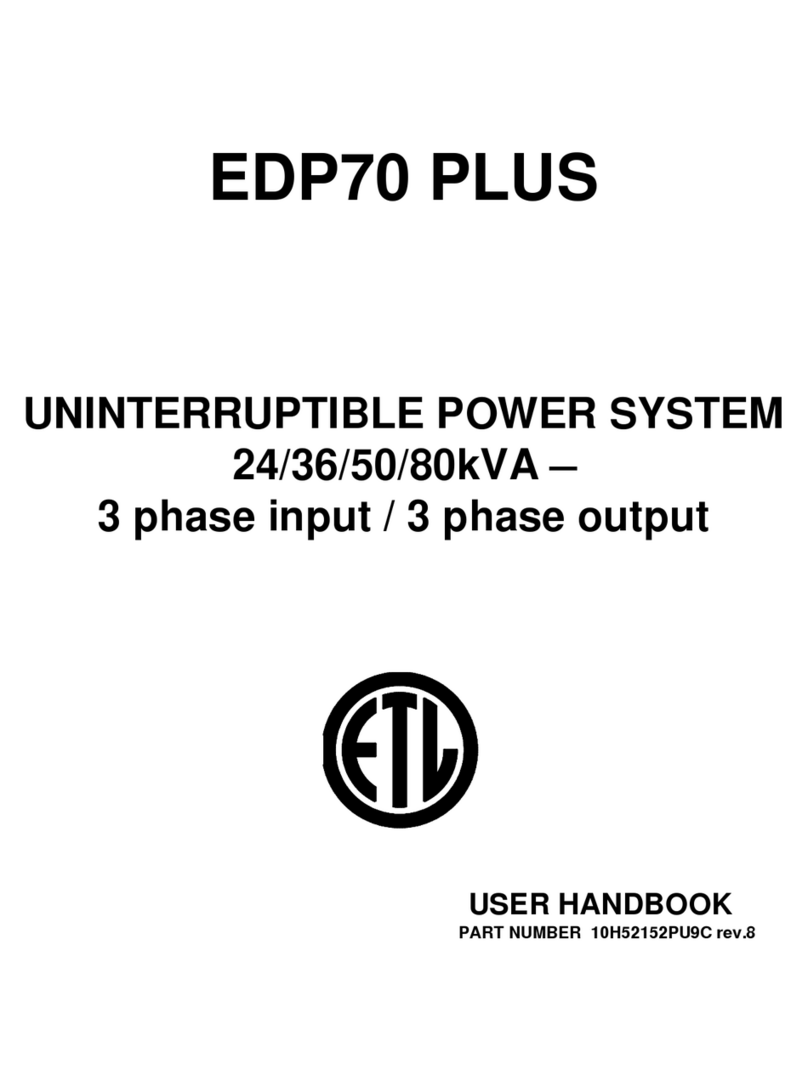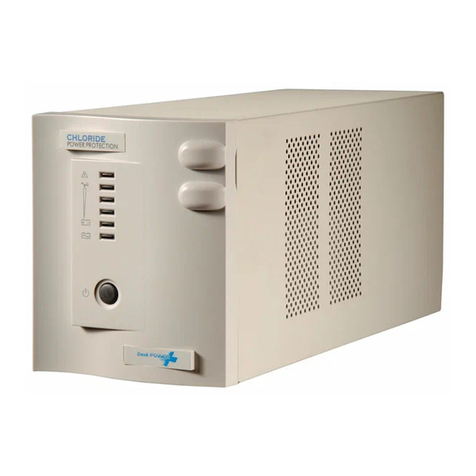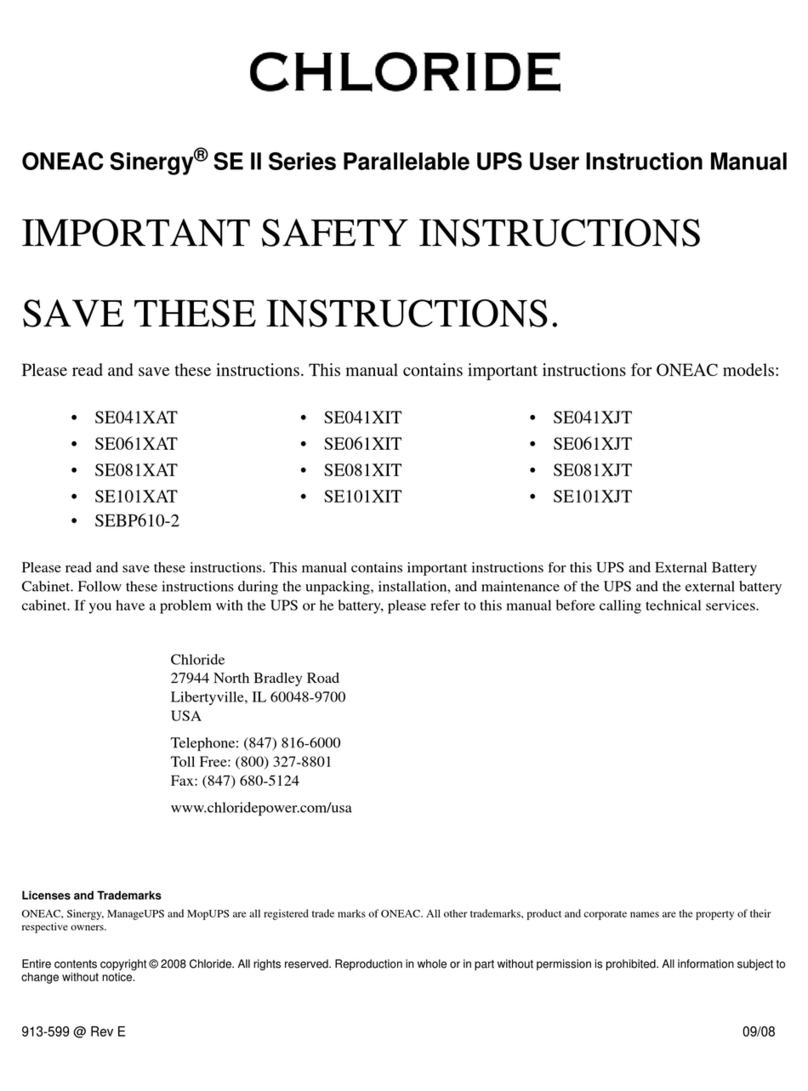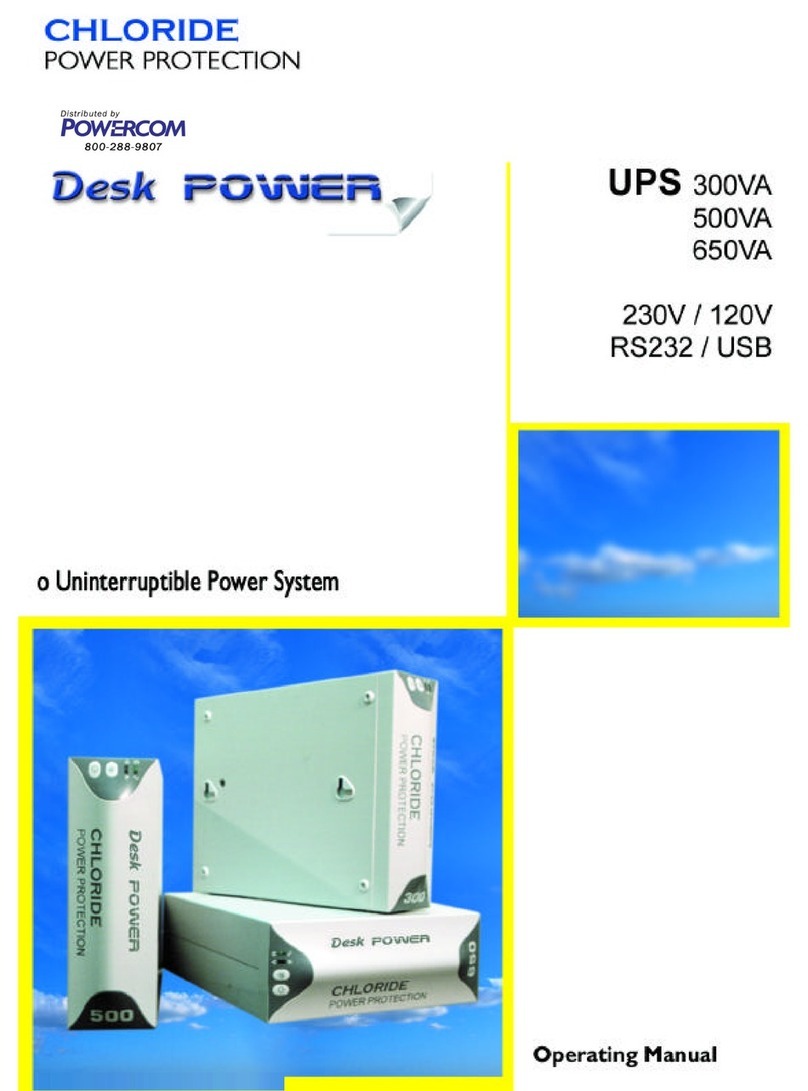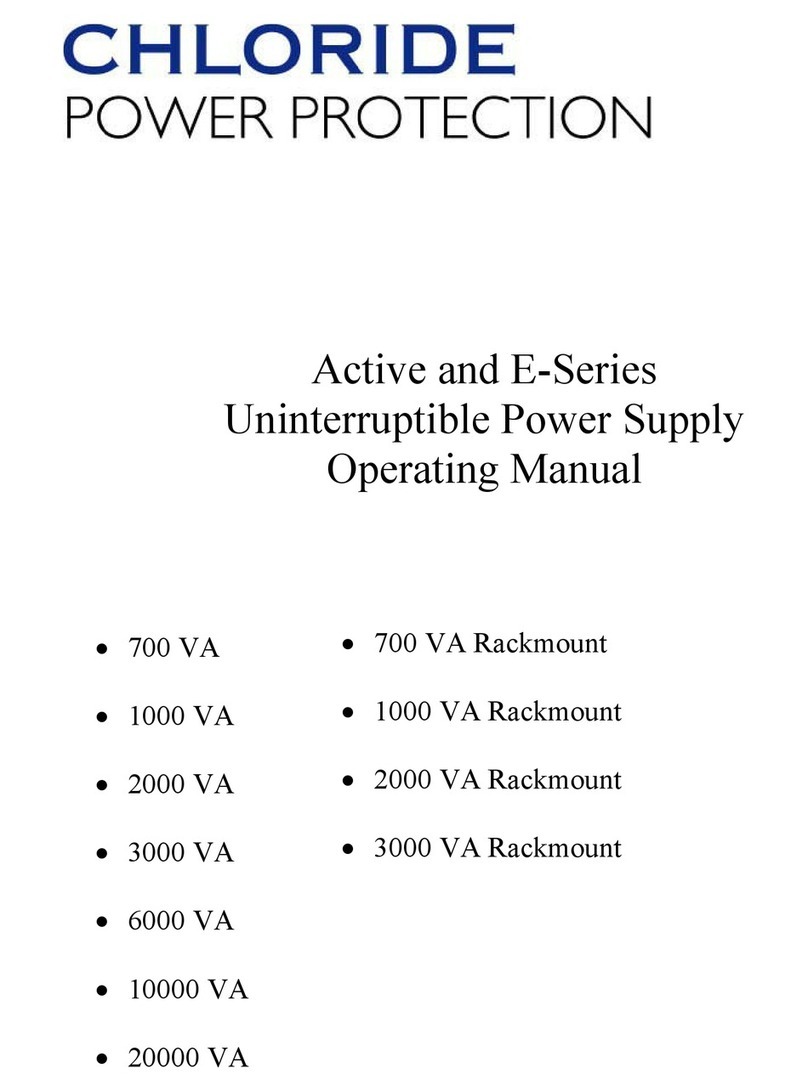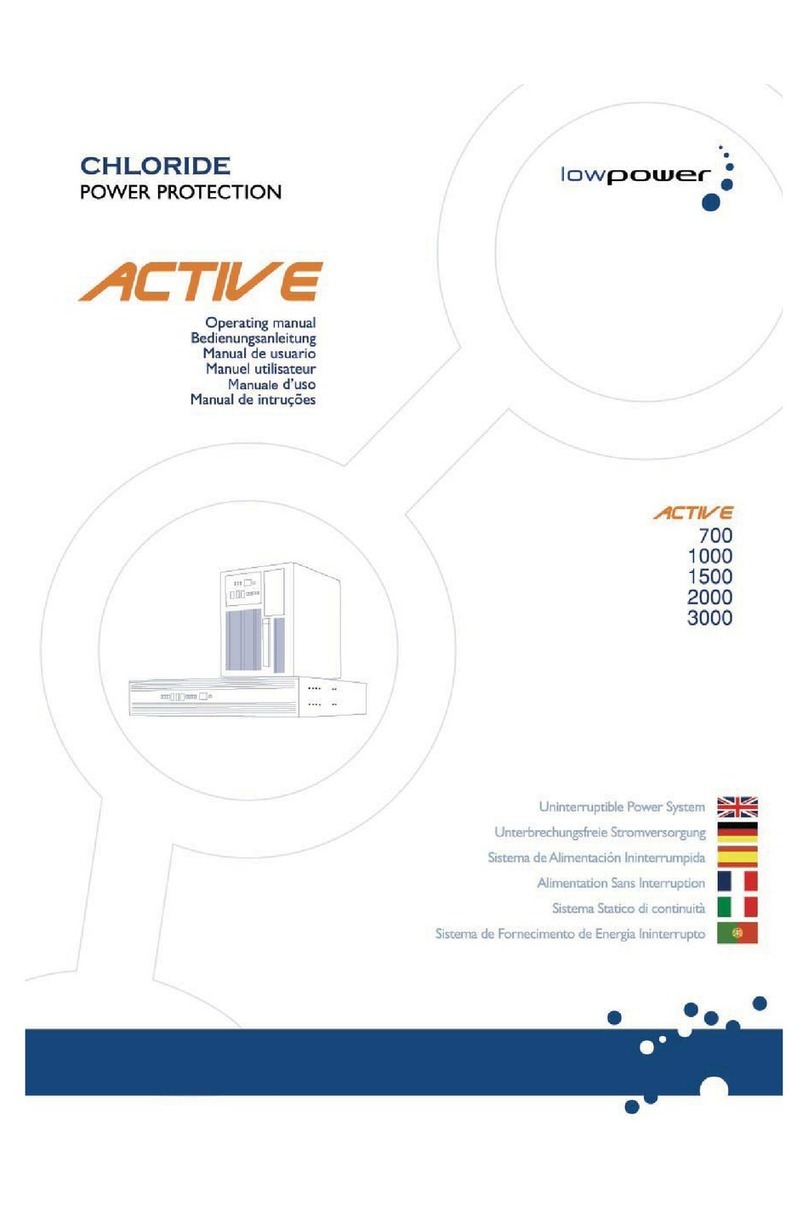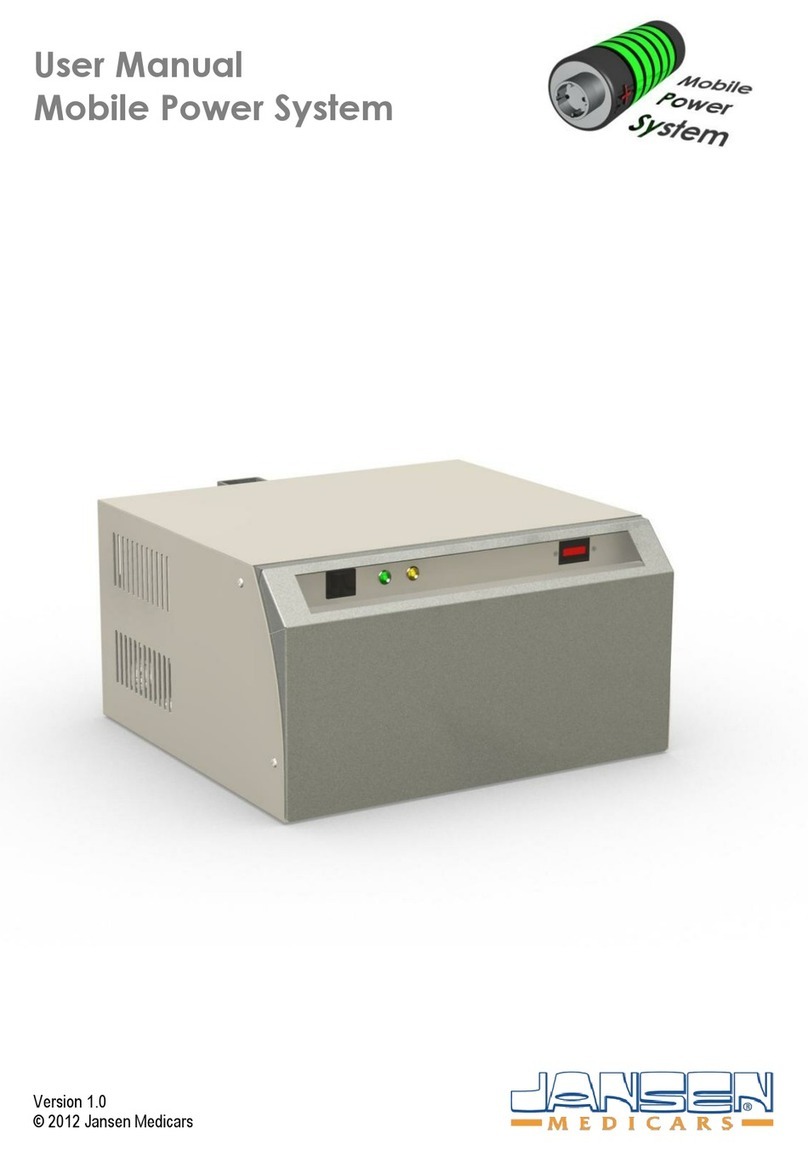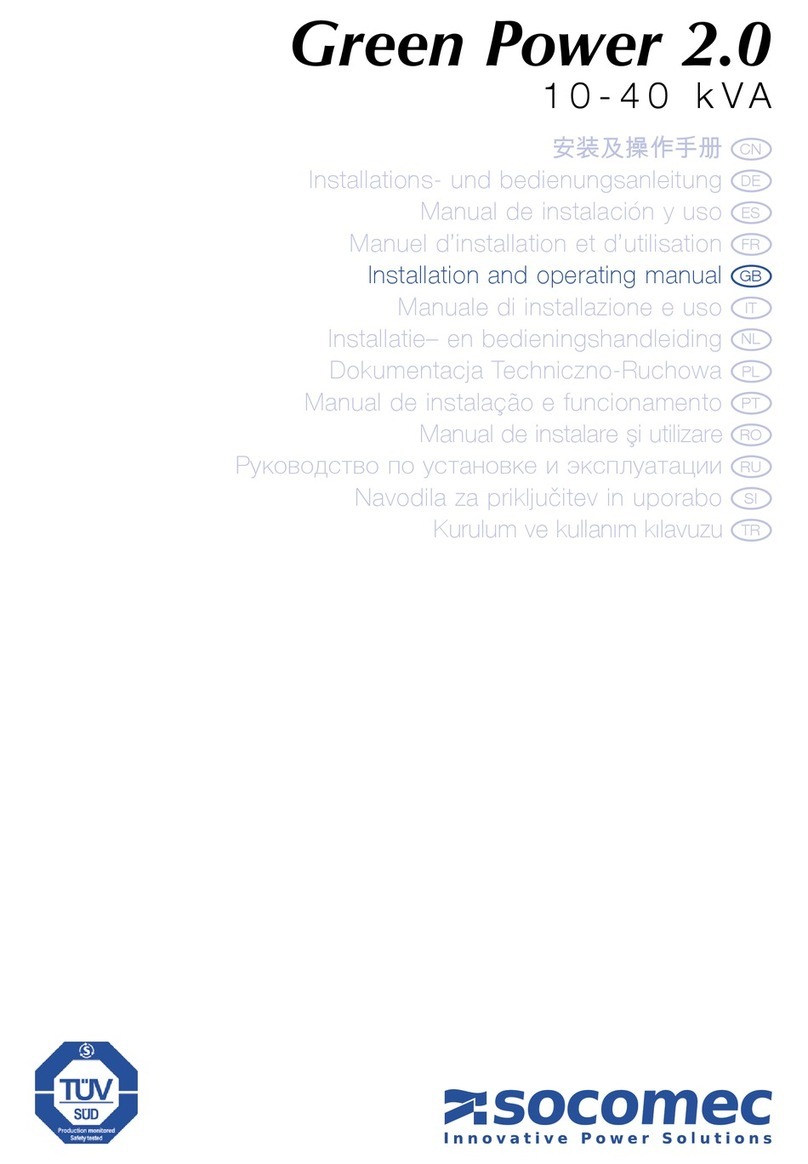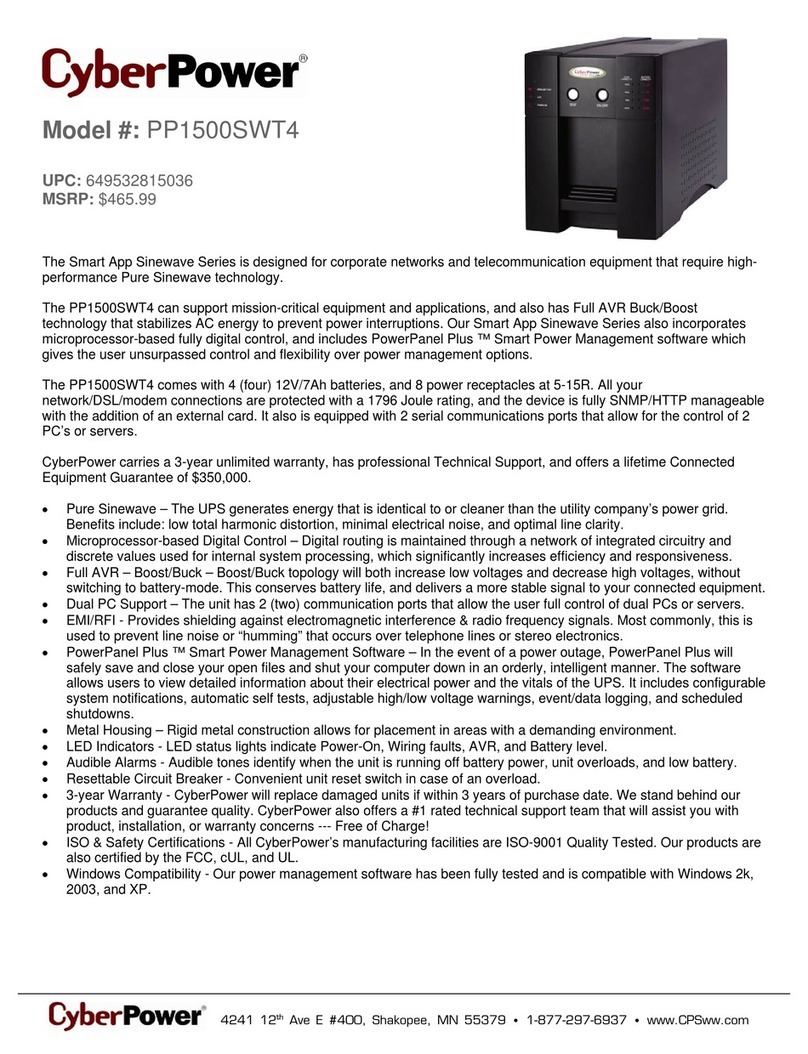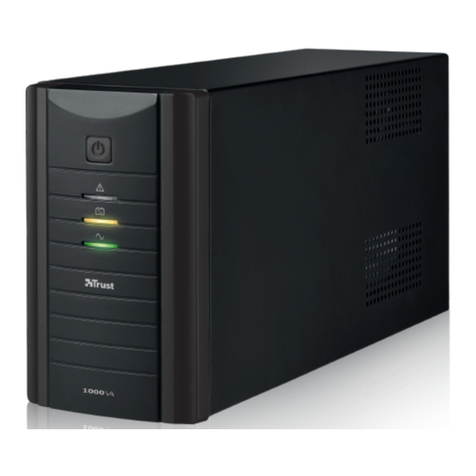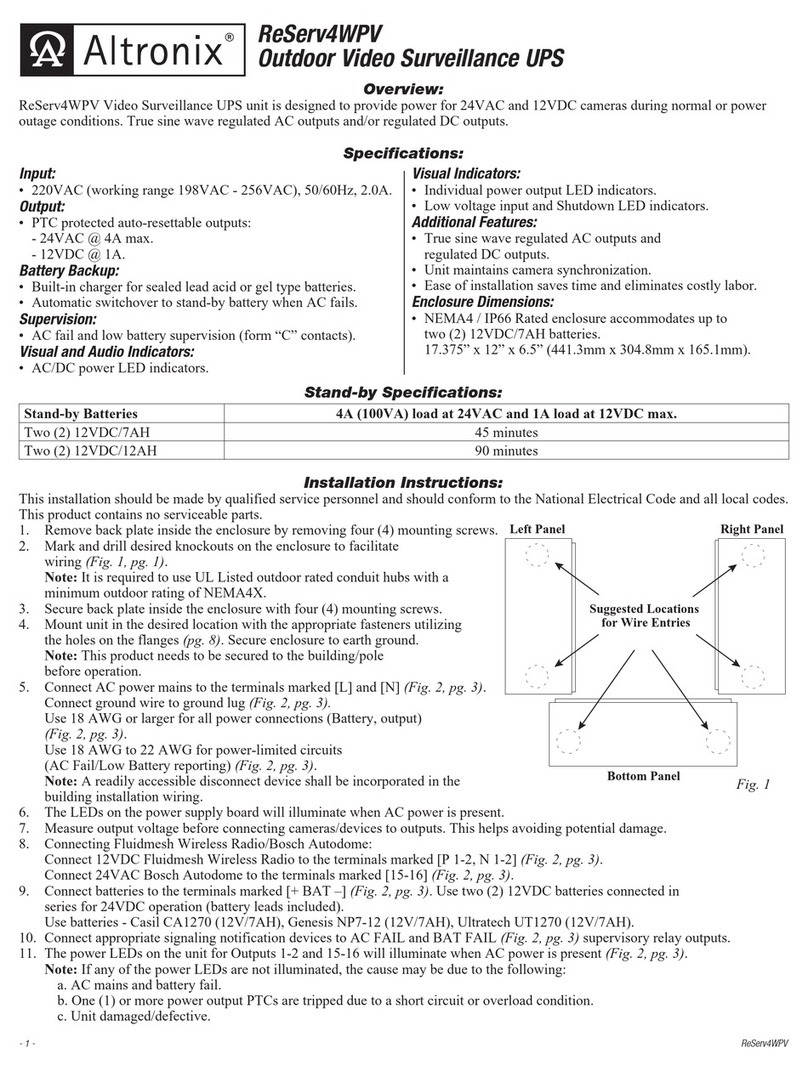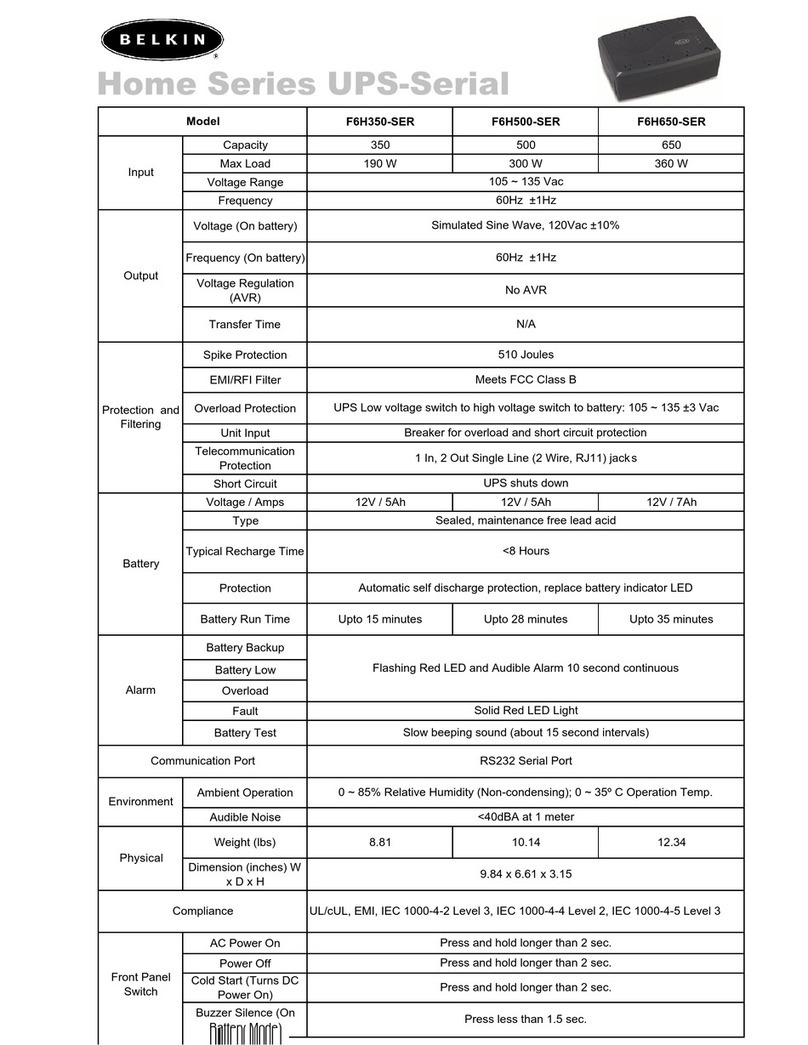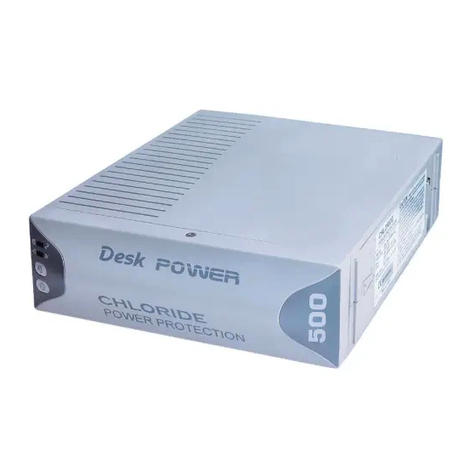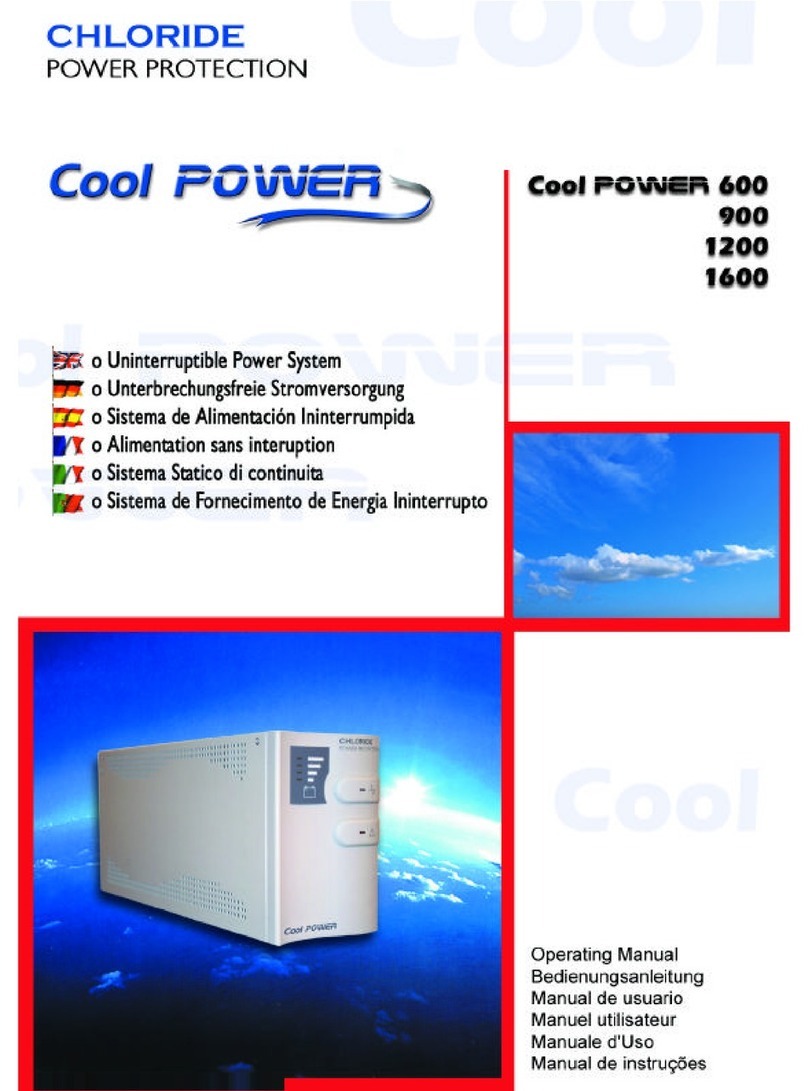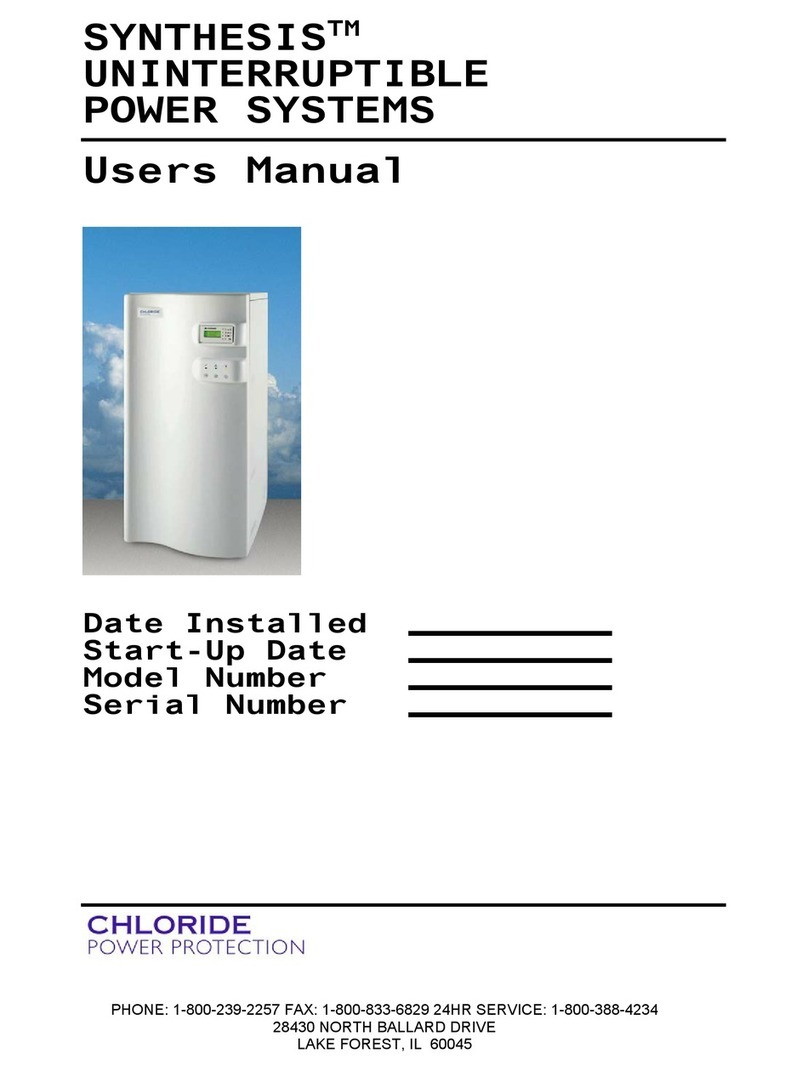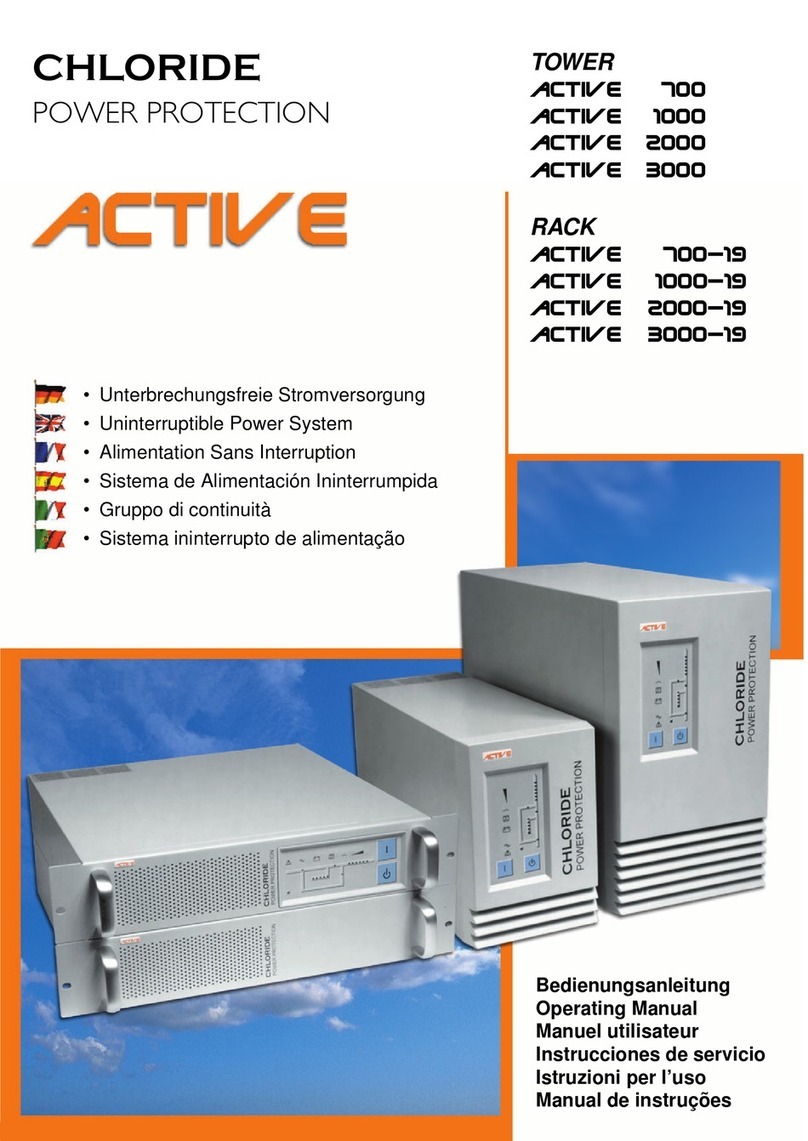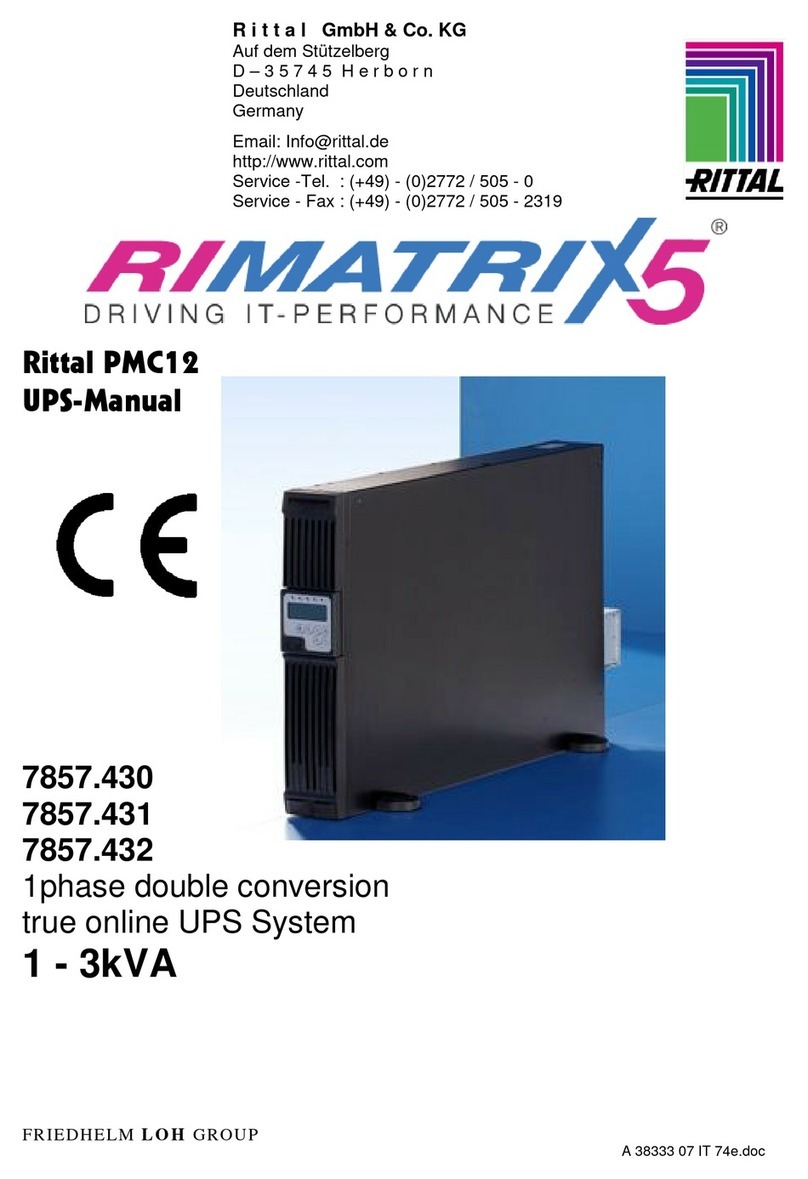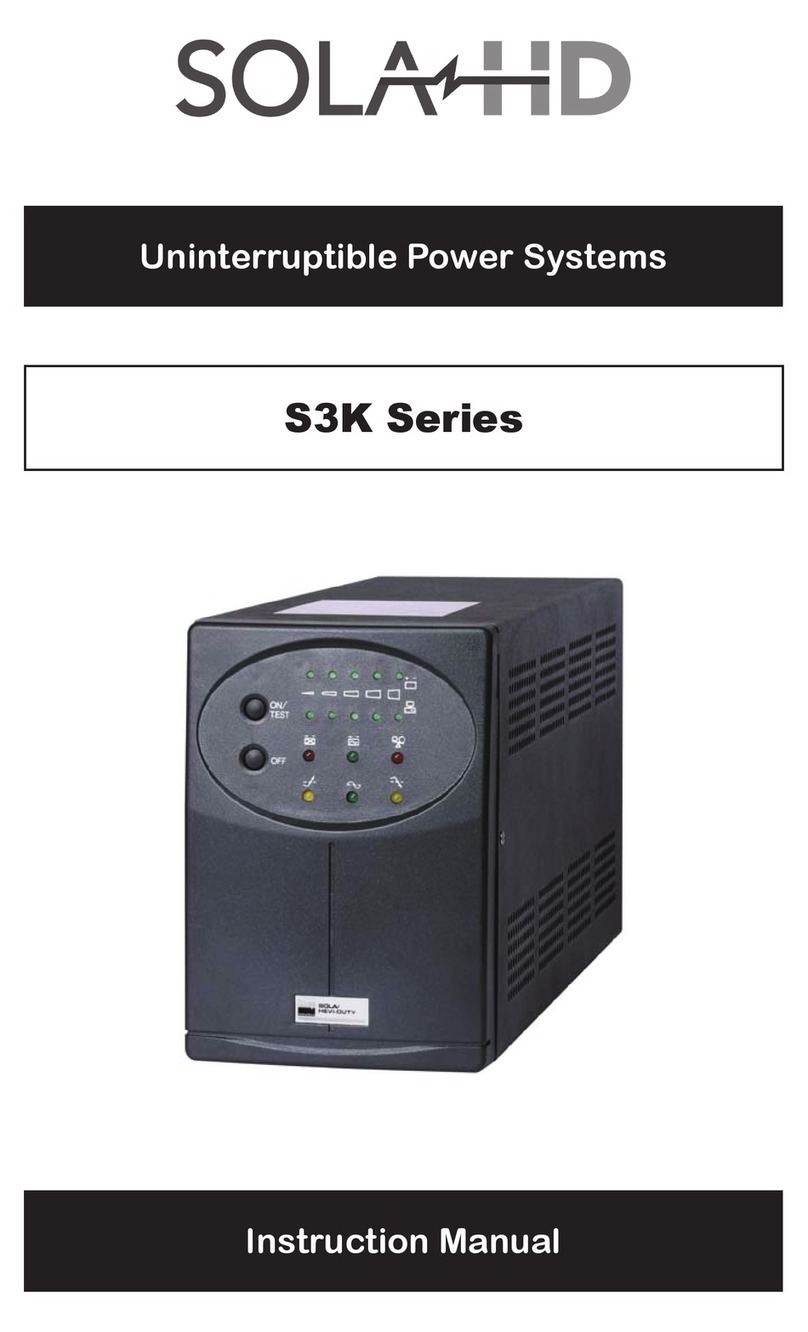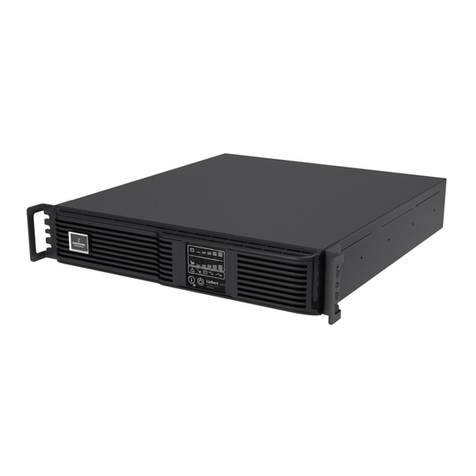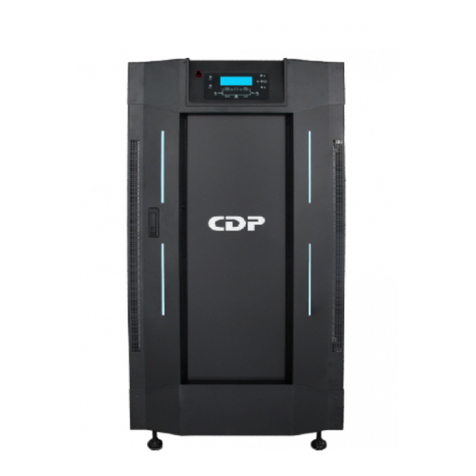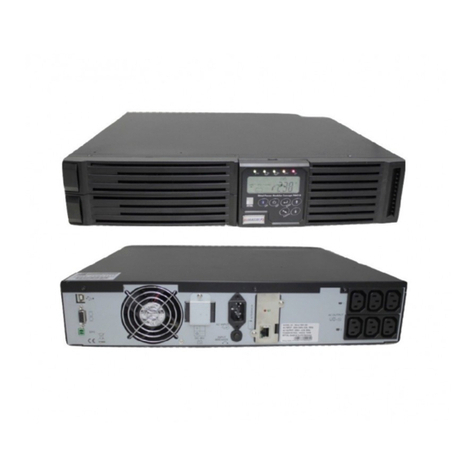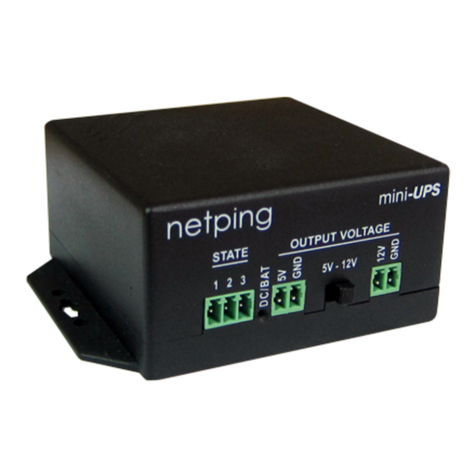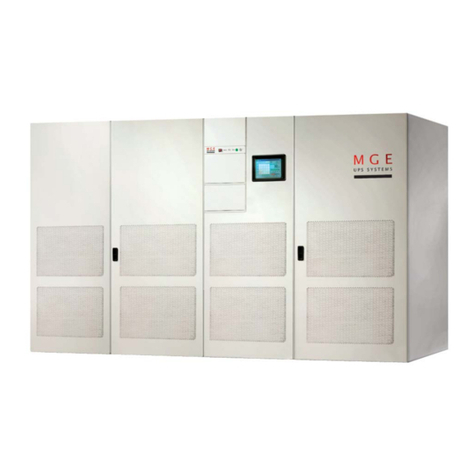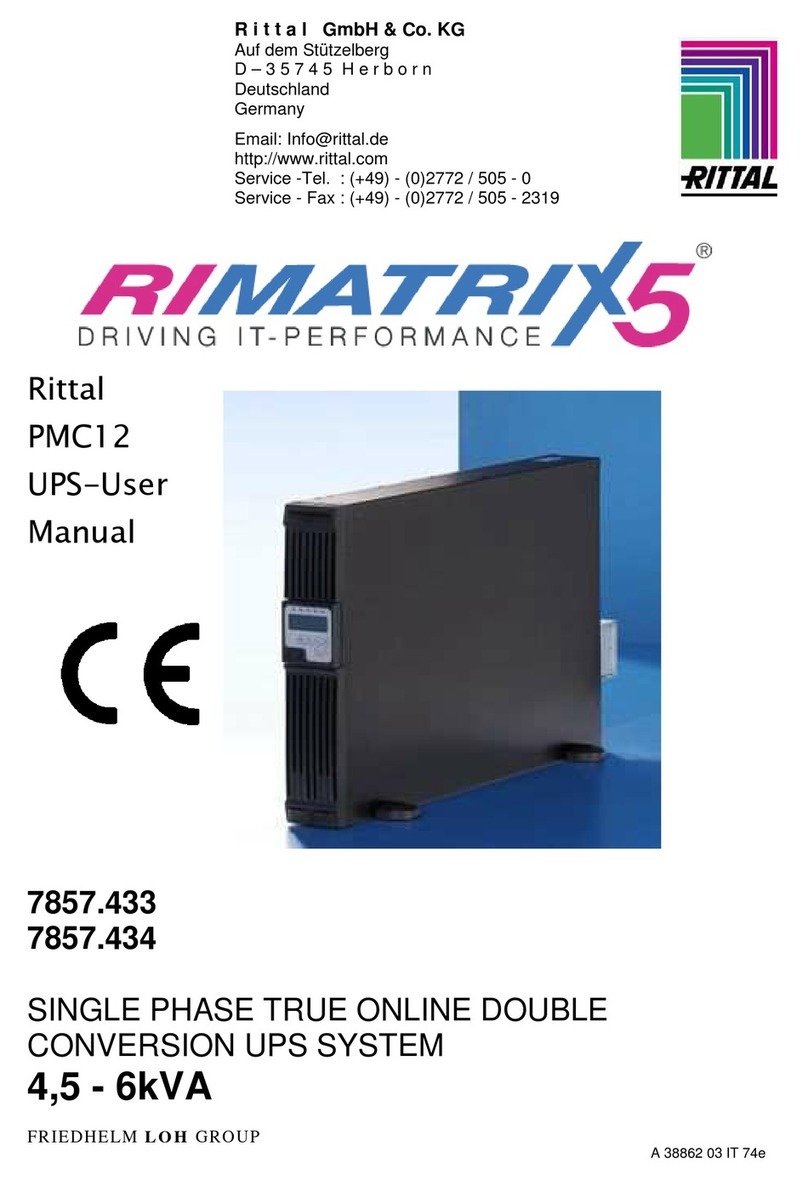
vii
Safety (English)
WARNING:
This equipment services power from more than one source. The convenience receptacles may have voltage
even when the unit is off. UPSs present a different safety issue than most electrical equipment because
removing input power from the UPS puts it into backup mode. Removing the input power from the UPS does
not remove the electrical charge. To ensure that the UPS is off, turn the inverter OFF before removing the
input power from the UPS.
CAUTION:
Operating this equipment without proper grounding may present a risk of electrical shock.
WARNING:
Dangerous voltages are present within this unit! There are no user-serviceable parts inside. Any repairs or
modifications by the user may result in out-of-warranty repair charges, unsafe electrical conditions, or
violation of electrical code. Do not remove the cover. All repairs should be done by qualified service
personnel. Voltages inside the UPS may be lethal. Internal components are powered even when the power
switch is in the OFF position. Even with the battery disconnected and the unit unplugged, energy is stored in
high voltage capacitors and represents a severe shock hazard.
Other Safety Considerations:
The system is not intended for outdoor use. The operating environment should be maintained within the
parameters stated in the manual. Keep the cabinet doors closed and locked to ensure proper cooling airflow
and to protect personnel from dangerous voltages inside the unit. The UPS system contains its own power
source. Lethal voltages are present even when the UPS is disconnected from utility power.
If service or routine maintenance is required:
Ensure all power is disconnected before performing installation or service. Ensure the area around the UPS
system is clean and uncluttered. Battery maintenance or battery replacement should be performed only by
authorized service personnel.
Observe all DANGER, CAUTION and WARNING notices affixed to the inside and outside of the
equipment.
Battery Disposal UPS batteries contain toxic and acidic materials. Disposal method must adhere to
local/national recycling laws. Dispose of the battery in one of three ways:
ATTENTION: The batteries in this UPS are recyclable. Dispose of the batteries properly.





















